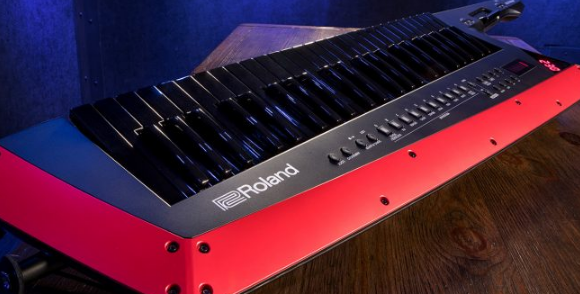Products Category
- FM Transmitter
- 0-50w 50w-1000w 2kw-10kw 10kw+
- TV Transmitter
- 0-50w 50-1kw 2kw-10kw
- FM Antenna
- TV Antenna
- Antenna Accessory
- Cable Connector Power Splitter Dummy Load
- RF Transistor
- Power Supply
- Audio Equipments
- DTV Front End Equipment
- Link System
- STL system Microwave Link system
- FM Radio
- Power Meter
- Other Products
- Special for Coronavirus
Products Tags
Fmuser Sites
- es.fmuser.net
- it.fmuser.net
- fr.fmuser.net
- de.fmuser.net
- af.fmuser.net ->Afrikaans
- sq.fmuser.net ->Albanian
- ar.fmuser.net ->Arabic
- hy.fmuser.net ->Armenian
- az.fmuser.net ->Azerbaijani
- eu.fmuser.net ->Basque
- be.fmuser.net ->Belarusian
- bg.fmuser.net ->Bulgarian
- ca.fmuser.net ->Catalan
- zh-CN.fmuser.net ->Chinese (Simplified)
- zh-TW.fmuser.net ->Chinese (Traditional)
- hr.fmuser.net ->Croatian
- cs.fmuser.net ->Czech
- da.fmuser.net ->Danish
- nl.fmuser.net ->Dutch
- et.fmuser.net ->Estonian
- tl.fmuser.net ->Filipino
- fi.fmuser.net ->Finnish
- fr.fmuser.net ->French
- gl.fmuser.net ->Galician
- ka.fmuser.net ->Georgian
- de.fmuser.net ->German
- el.fmuser.net ->Greek
- ht.fmuser.net ->Haitian Creole
- iw.fmuser.net ->Hebrew
- hi.fmuser.net ->Hindi
- hu.fmuser.net ->Hungarian
- is.fmuser.net ->Icelandic
- id.fmuser.net ->Indonesian
- ga.fmuser.net ->Irish
- it.fmuser.net ->Italian
- ja.fmuser.net ->Japanese
- ko.fmuser.net ->Korean
- lv.fmuser.net ->Latvian
- lt.fmuser.net ->Lithuanian
- mk.fmuser.net ->Macedonian
- ms.fmuser.net ->Malay
- mt.fmuser.net ->Maltese
- no.fmuser.net ->Norwegian
- fa.fmuser.net ->Persian
- pl.fmuser.net ->Polish
- pt.fmuser.net ->Portuguese
- ro.fmuser.net ->Romanian
- ru.fmuser.net ->Russian
- sr.fmuser.net ->Serbian
- sk.fmuser.net ->Slovak
- sl.fmuser.net ->Slovenian
- es.fmuser.net ->Spanish
- sw.fmuser.net ->Swahili
- sv.fmuser.net ->Swedish
- th.fmuser.net ->Thai
- tr.fmuser.net ->Turkish
- uk.fmuser.net ->Ukrainian
- ur.fmuser.net ->Urdu
- vi.fmuser.net ->Vietnamese
- cy.fmuser.net ->Welsh
- yi.fmuser.net ->Yiddish
Getting Started with Keytars
Date:2020/2/13 22:03:42 Hits:

Keytars — a mash-up of the words “keyboard” and “guitar” — have been around since at least 1973, when Edgar Winter first put a guitar strap on the controller keyboard from his ARP 2600 synthesizer. Jan Hammer, a fusion keyboardist, started using keytars in the late ’70s and later became famous for his use of keytars in the soundtrack of the Miami Vice television series. In 1980, Moog released the Moog Liberation keytar, making wearable keyboards available to professional musicians. But, the biggest boost to the keytar was the introduction of MIDI in the early ’80s, which allowed for lightweight, stylish controllers that could connect to any MIDI synths you already owned. This, unfortunately, also coincided with the rise of MTV and their over-the-top music videos. But, if you can get past the silliness of the ’80s, then keytars can be a seriously useful tool for live performance. Here are some of my personal reasons for using them:
You can travel to a local jam with a keytar on your back while walking, taking public transportation, or riding a bicycle or motorcycle.
You don’t have to bring a stand with you (or power if you use batteries). This allows you to set up anywhere that you can stand, including a spot closer to the speaker so that you can better hear yourself.
If you add a wireless audio transmitter/receiver (and use batteries), then you can play anywhere, indoors or outdoors, without any physical connections whatsoever. And when you’re done, you can walk off the stage and have everything with you.
Alesis Vortex Wireless II Wireless Keyboard Controller
Inebriated patrons requesting a song can’t hold a drink over your keyboard or knock it over while failing to dance gracefully.
When wearing a keytar, the wrist positions of your left and right hands are both comfortable. And, whether you move around a lot or just a little, the keys, wheels, and ribbon stay in exactly the same place in relation to your hands. You can “become one” with it in a way that’s not the same with a keyboard that’s on a stand near you.
People will actually watch you during your keyboard solos, instead of watching the guitarist tune up. Television cameras will actually point toward you now and then, instead of never. This is because the audience (and cameras) can now actually see both of your hands in a way that directly relates to what they’re hearing. (It does help to exaggerate your hand and body motions just a little.)
You will be treated as a single instrument instead of being the person who covers every single part that’s missing. If you’re the bass player, then they won’t also ask you to comp some chords with your other hand. If you’re the keytarist, then they can’t ask for additional parts besides what you’re already playing.
A modern keytar can either be solely a MIDI controller, such as the Alesis Vortex Wireless II, or a complete synthesizer with sounds and effects, such as the Roland AX-Edge and the Yamaha Sonogenic.
Yamaha Sonogenic 37-key Keytar
The Yamaha Reface series keyboards (CP piano, DX FM synth, CS virtual analog synth, and YC combo organ) can also become wearable with the optional Reface Keytar Strap Attachment Kit.
The bottom line is that any of these will allow you more opportunities to play in situations where you might normally leave your gear at home (and regret it).
Leave a message
Message List
Comments Loading...





